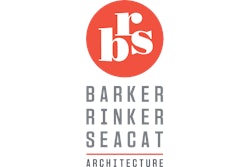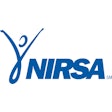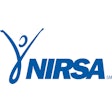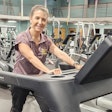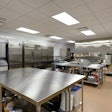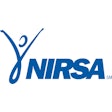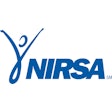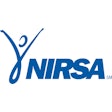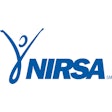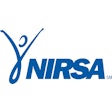As Indirect Lighting Makes Inroads in a Wider Range of Recreation Spaces, Designers Must Balance Aesthetic Goals With Energy Concerns
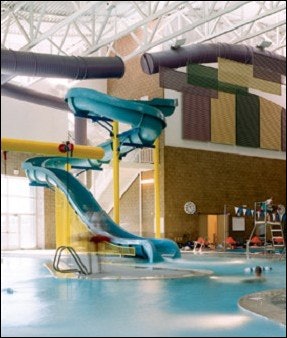
Without a doubt, where lighting is concerned, it pays to know all the angles - specifically, the angle of incidence and the angle of reflection. This has never been more true, as indirect lighting, which at one time was most commonly found in tennis centers, becomes a major player in competitive and leisure pools, gymnasiums and ice rinks.
But facility designers and lighting engineers in this, the golden age of indirect lighting, need to know a lot more than high school physics. Because indirect lighting systems bounce light off other surfaces in the room (most commonly the ceiling), specifiers must also have an understanding of energy usage, materials selection and the myriad mechanical systems required in sports applications. As D. Schweppe, owner of Schweppe Lighting Design Inc. of Concord, Mass., notes, "You have to have a handle on the whole design approach to the space, not just the lighting. You have to talk everything through from start to finish: What materials are in the space? How much stuff do we have suspended from the ceiling? How do we plan to get to the fixtures? What opportunities do we realistically have to use indirect lighting? And most of all, what are we trying to accomplish aesthetically?"
Indirect light owes its secure position in the tennis world, quite literally, to the harsh glare of direct lighting systems: Players under direct lights tend to be blinded when they attempt to serve. When indirect lighting is utilized in a gym, it is typically for the same reason - under direct lights, volleyball players in particular have trouble following the flight of the ball.
Appreciation of indirect lighting has been slower to take hold among sports architects than among designers of other building types, however. Along with the operational-cost issues noted on page 54, many architects and facility owners remain dubious of indirect lighting systems' ability to adequately light large spaces for recreational activities or (especially) competitive sports.
Blame all that bouncing. Light that leaves a fixture, strikes a surface and is reflected loses some of its intensity, because at least some light is absorbed by the surface. This is true of even the most efficient indirect lighting setups - those that bounce light off flat, pure white ceilings and walls ("surfaces of high reflectivity," in lighting parlance). In offices, where indirect systems are common, some people complain that the light is dim; others are made vaguely uncomfortable by the from-nowhere illumination. The lack of contrast in the space can make it seem aesthetically listless, and as one European manufacturer of architectural lighting design software puts it, indirect lighting "makes it difficult to recognize details on three-dimensional objects."
It's for this reason, says Roy Viklund, director of the Sports Facilities Design Group at Sasaki Associates in Watertown, Mass., that his firm sometimes specifies combination direct/indirect systems in tennis centers. "Sometimes we'll put in direct fixtures at the edges of the court so players can pick up the spin on the ball a little better," Viklund says. "If you get a shadow from a direct fixture, you feel like you're really getting some light on the playing surface. In an indirect situation where everything's diffused, you don't get that same perception."
Designers say they battle a perceptual problem in many large spaces in which they've specified indirect systems. "We sometimes get that reaction from our clients, that it seems dim," says Dave Hammel, a principal with Denver-based Barker Rinker Seacat Architecture. "But then we'll take out a light meter and measure the foot-candles, and it's plenty bright enough. They'll say, 'It doesn't feel as bright.' "
In aesthetic (and psychological) terms, that's called the "cloudy day effect," notes Jon Brooks, a project engineer with Beaudin Ganze Consulting Engineers of Golden, Colo. "It's mainly that they don't know where the light's coming from, so they feel weird," Brooks says. "As a designer, you have to work out a strategy to develop some form of noticeable light within the space. Somewhere there's got to be a wall sconce throwing brightness on the wall, or the indirect lighting fixture itself has to have a downlight component. If it has a perforation on the bottom that allows just a little light to come out - not usable light, but something noticeable - then most people are comfortable."
In spite of these sorts of user complaints, a great many designers speak highly of indirect lighting's overall "feel." It lends a softer, more calming atmosphere, with no annoying glare. The lack of shadow (indirect light is omnidirectional and thus diffuse) flatters the faces of people and adds depth to spaces, making them seem more spacious.
This combination of aesthetic advantages (spaciousness) and safety advantages (no glare) makes indirect lighting especially suitable for use in leisure pools. A third advantage in leisure pools is maintenance-related: Since indirect fixtures "throw" light at an angle, they can be located above the pool deck, not only above the pool, allowing for easy bulb replacement.
"It's very difficult to directly light a swimming pool from the perimeter, although we have done some lap pools that way," Hammel says. "These irregular leisure pools are extremely difficult to do direct."
While glare is normally considered a safety drawback for lifeguards and parents trying to see into the pool, glare is the reason Schweppe is also a strong proponent of indirect lighting in competitive swimming environments. "Indirect lighting is an advantage for swimmers and divers, especially divers," he says. "When you get divers on a 10-meter platform, and they're looking down and trying to get their bearings and there are lots of little splotches of light shining up from the surface of the water - well, it's not fun."
Because the quality of indirect lighting is so dependent on its surroundings, designers must know exactly how subtle (and not so subtle) changes in the room will affect the systems specified. "The biggest problem is always trying to get a clear ceiling," says Schweppe. "We're always fighting so many things, from sprinkler pipes to the HVAC - although sometimes acoustical baffles are our best friends, because you can make them a light color and actually use them as a reflective surface. It all comes down to everybody sitting together in a room and coming to terms."
Fortunately, lighting design software has come a long way in the last five years, allowing designers to create detailed models of the space being outfitted, including all mechanical systems and wall and ceiling reflectances. A wall color change, a shift from flat to medium-gloss paint or the addition of acoustical panels can all be added to the model with a few keystrokes and the resulting change in lighting levels checked.
"If the architect suddenly decides to paint the ceiling something other than white, it has huge implications," says Brooks. "But in the computer age, we can simply note the change and rerun the program." Similarly, if an acoustical panel is found to be blocking a fixture, the program helps determine what should be moved, and where. Ductwork, which is extremely obtrusive in recreational spaces, can often be moved without affecting the HVAC system's efficiency. "I've found with mechanical systems it's fifty-fifty," Brooks says. "I give a couple feet and the architects give a couple feet."
A significant advantage of indirect lighting in ice facilities is the evenness of light - and thus, evenness of heat. Direct lighting has the tendency to cause soft spots in the ice surface directly under the fixtures.
But indirect lighting remains rare in ice rinks for two distinct reasons, both related to rinks' high energy consumption. First, indirect lighting works best in situations where the ceiling is as uniform as possible, like the flat white vinyl used in tennis facilities to make the most of the light that's there. In ice rinks, however, the importance of energy efficiency, both to save money and to keep the environment at optimum temperatures, has increasingly led rink designers to specify low-emissivity (low-E) ceilings. These are darker-hued and metallic, which in lighting terms offer the worst of both worlds: they're less reflective than white vinyl, but still reflective enough to send glare to the ice surface.
"Rinks are expensive to operate, so you're going to see low-E ceilings in rinks," says Conrad Boychuk, a principal with PBK Architects in Vancouver, B.C. "I'm not sure you get as good illumination from indirect systems when low-E ceilings are in place, and besides, their reflectivity means you end up getting hot spots anyway."
Ice rinks' high humidity plus high operating costs are responsible for the preponderance of pre-engineered structures - another strike against indirect lighting. Says Viklund, "You want a flat ceiling, and if you have the purlins that are in most of the pre-engineered systems or if you're using a corrugated metal deck, the light doesn't bounce straight down."
The biggest strike of all, though, is the way in which the energy portion of most building codes are written. ASHRAE 90.1, a national standard for public facilities that has been adopted by many states, limits the amount of energy that can be consumed based on the square footage of a space. Doing an energy audit essentially means counting up light fixtures and other electrical equipment, and dividing the resulting kilowatt total by the size of the building. In large recreational facilities, if one component (such as an ice rink) consumes a lot of energy, that only leaves a certain amount of watts for the other areas.
Designers acknowledge the importance of saving energy but say many energy codes don't adequately take into account how recreational facilities are constructed and used. Schweppe notes, for example, that a new energy code adopted by Massachusetts doesn't factor in how high the ceilings in a given space are - a problem when lighting designers attempt to adequately illuminate a natatorium that has been designed with a dramatic, high ceiling.
High demand for ice time is leading many communities to build facilities with multiple sheets. In Arvada, Colo., the two-year-old, $23 million Apex Center features (in addition to fitness, climbing and children's play facilities) a three-pool natatorium and two separate ice rinks. Initially designed by Barker Rinker Seacat to have indirect lighting in the pool area and in both rinks, the Apex Center couldn't pass an in-house energy audit, leading the design team to switch one rink to direct lighting in an ultimately successful effort to get in compliance with ASHRAE. "We would have preferred indirect in both of them," says Hammel. "There are various ways you can meet the energy code - for example, by beefing up the insulation in the exterior walls or roof - but this came so late in the process we didn't have the ability to do much else."
Brooks, who was responsible for the lighting-system design and redesign, says both rinks ended up being "very comfortable. There's not as much of a difference as I thought there'd be." If he remains unhappy with any aspect of the Apex project, it's his lingering unease with what has not yet been written into energy codes. The pool environment, for example, is not specifically addressed in the energy guidelines. "The only way you can make it work is to indirectly light that area and try to make up the extra energy in other portions of the building," says Brooks. "The guidelines don't mention any of the glare issues or any of the maintenance issues, like having fixtures where you can reach them."
Worst of all, in Brooks' view, is some codes' refusal to allow exceptions for facilities that use energy-saving systems such as automatic dimming controls. Brooks notes that the International Building Code, the most strict and increasingly the most widely used code, has no allowances for such systems, which can save energy by (for example) automatically dimming the lights in a natatorium when sunlight streams through skylights and windows. "It's really a killer," he says of the IBC's neglect. "You need that. It helps people start to specify automatic dimming controls, which overall is a better energy-management scenario."
Although numbers compiled by Brooks - an indirect-lighting advocate if ever there was one - estimate indirect systems' operational costs to be 20 percent higher than direct, there is actually far from universal agreement about this issue. (Schweppe estimates that under ideal conditions, the additional cost is "probably less than 10 percent," but that "ideal conditions don't happen very often.") There are those, however, who maintain that because indirect lighting illuminates space more evenly, designers can get away with lighting a space at fewer foot-candles. As noted by "Advanced Building Technologies & Practices," a web site supported by a consortium of Canadian government and private organizations, "By providing more uniform lighting to a space, indirect lighting allows for a reduction in light levels. This translates into significant electricity savings and a reduction in cooling load."
The 20 percent higher operational cost, Brooks says, is real - yet he believes the preoccupation with watts obscures indirect lighting's many advantages. "Because of the energy codes, I have to completely bend over backward to make compromises with the rest of a facility to make these big spaces work," he says. "It would be nice if people recognized the visual advantages of indirect lighting and not just the energy disadvantages."


















